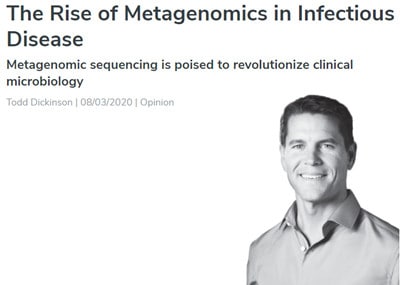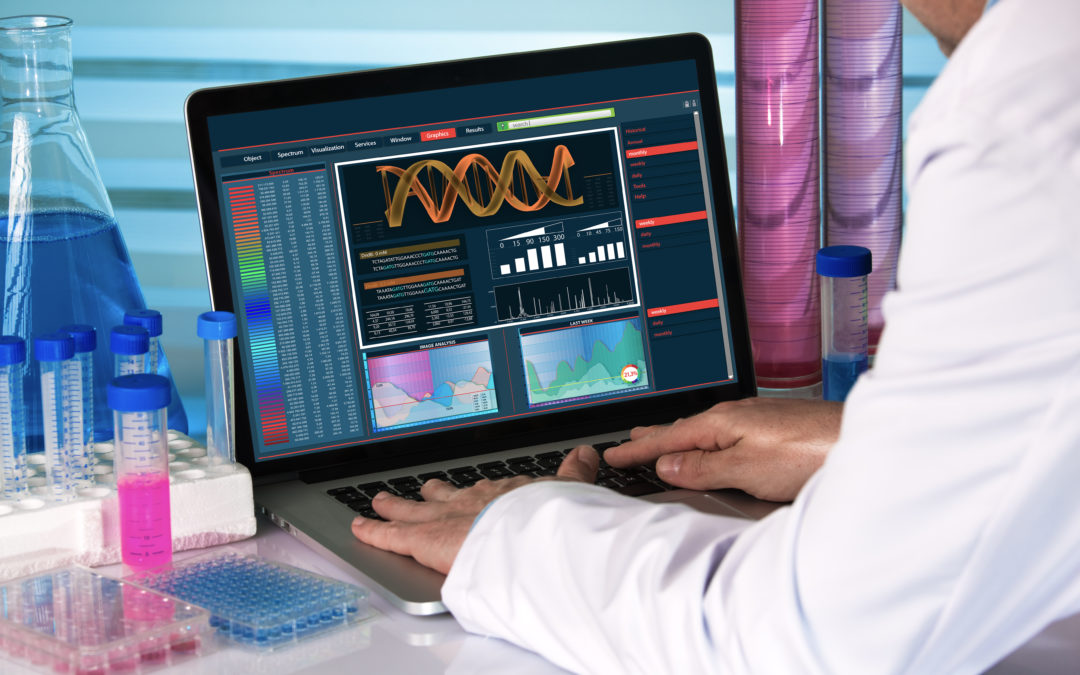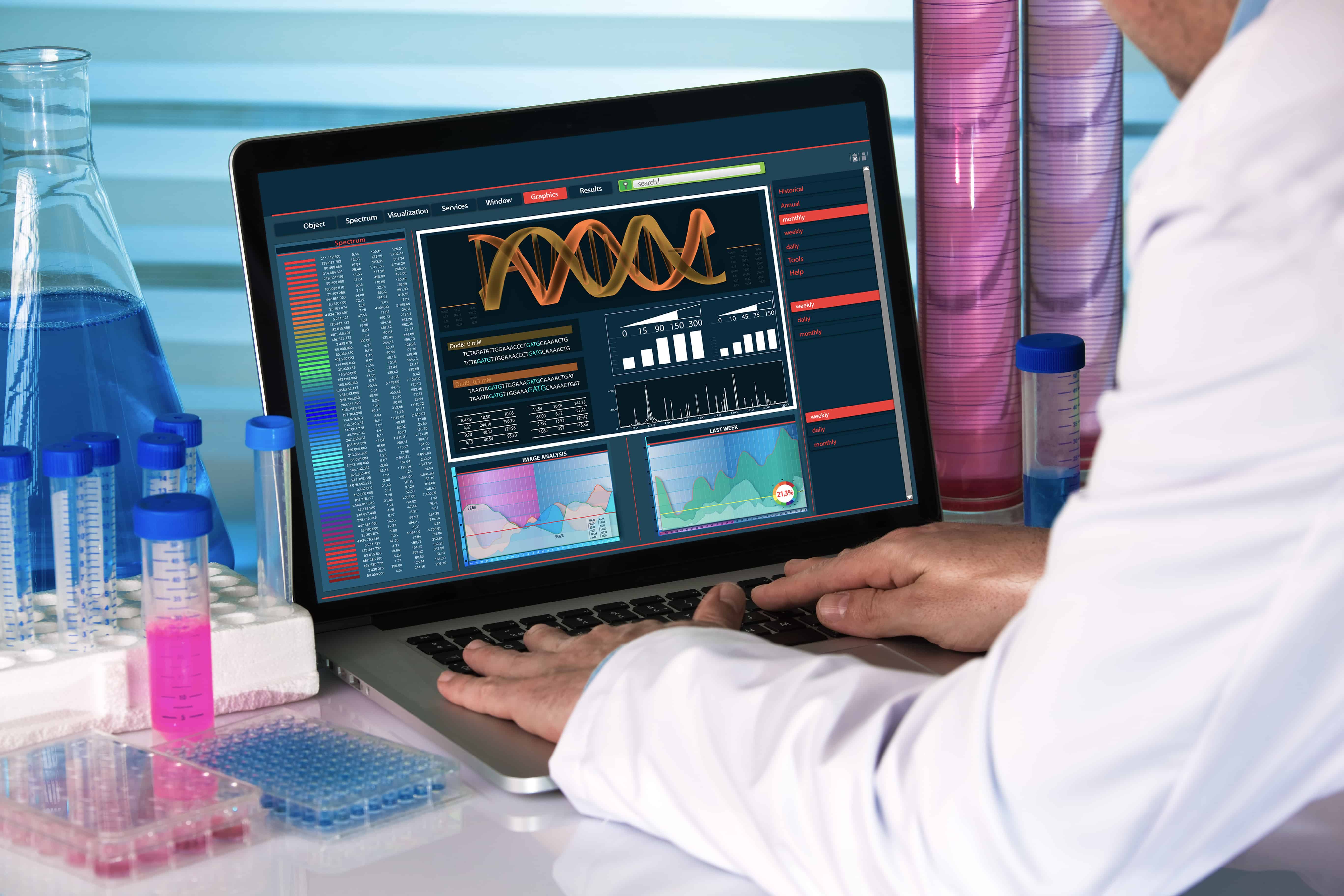Since its advent in 2005, NGS has demonstrated its enormous potential in clinical medicine, diagnostics, personalized medicine, and life sciences research. The practical applications of these technologies are disrupting the research and clinical communities and leading the way toward better and faster health care.
NGS Applications
- Sequencing Cancer Genes: Cancer research has traditionally been complicated because different types of cancers do not share common underlying mechanisms. Scientists have to study a multitude of genetic variations that may lead to different cancer phenotypes, and they must compare sequences between cancer patients and healthy individuals to detect which variations are implicated in tumorigenesis. Unveiling and comparing these variations in a sufficient number of individuals cannot be done quickly or cost-effectively by traditional sequencing methods. However, with NGS, many genomes can be sequenced simultaneously, which has led to commercially available gene panels for cancer screening, diagnosis, prognosis, and pharmacogenesis. For instances, the Extended RAS Panel, an FDA-approved NGS kit, helps clinicians identify colorectal cancer patients eligible for Panitumumab treatment. NGS is encouraging worldwide collaborations for cataloging the mutations and genomic signatures in target genes for risk stratification, outcome prediction, and new treatment paradigms.
- Sequencing Whole Exomes: NGS technologies can selectively sequence the whole exome (protein coding regions) to discover most mutations that cause common and rare human diseases. While these coding regions constitute only 1-2% of the human genome, they contain about 85% of all disease-causing mutations.
- Sequencing Cell-Free DNA: NGS provides an efficient method to detect, measure, and annotate cell-free nucleic acids circulating in human blood. These can be used as early molecular diagnostic markers for many diseases, such as diabetes, cancer, and myocardial infarction. Identification of tumor- and fetal-derived circulating DNA has also been studied extensively for clinical oncology and prenatal diagnosis.
- Gene Expression Profiles: NGS can decipher the presence and quantity of RNA in a biological sample through RNA sequencing (RNA Seq) more accurately than microarrays. It can analyze the continuously changing cellular transcriptome by looking at alternatively spliced gene transcripts, post-transcriptional modifications, gene fusions, mutations/SNPs, and changes in gene expression over time to study the efficacy of various treatment options.
- Personal Genome: Whole-genome sequencing can yield useful and clinically relevant information for individual patients and, with the cost of sequencing falling precipitously, the widespread use of personal genomes appears within reach. The next challenge will be deciphering relevant information from large volumes of data from individuals for personalized medicine. Addressing this challenge will require comprehensive databases for disease-specific mutations so that proper diagnoses can be made and the proper treatments selected.
- New Disease Genes/Genetic Disorders: NGS has been successfully applied in many different research studies to identify new disease genes and genetic disorders. These discoveries include single gene disorders such as neurofibromatosis type 1, Marfan syndrome, and spastic paraplegia, as well as diseases caused by a group of related genes such as hypertrophic cardiomyopathy and congenital disorders of glycosylation. NGS has also been applied to multi-gene disorders, including retinitis pigmentosa and disorders without identified genetic causes
- Diagnosing Polygenic Diseases: For monogenic diseases with clear clinical and biochemical presentations, Sanger sequencing is an accurate and cost-effective way to obtain a conclusive molecular diagnosis. Because most inherited diseases are genetically heterogeneous, sequence analysis is costly and time consuming, which delays diagnosis and treatment. For example, 65 genes are responsible for Retinitis Pigmentosa, which renders traditional sequencing methods inadequate for analysis.
In the context of clinical applications, NGS technologies offer a number of advantages over the traditional sequencing methods. Specifically, NGS allows sequencing of a group of biomarkers from multiple samples in each run to get faster results for patients. Each patient can also be simultaneously screened for various genomic aberrations such as single nucleotide and multi-nucleotide polymorphisms (SNPs), insertions and deletions (indels), copy number variants (CNVs), and gene/transcript fusions. Simultaneous screening enables clinicians to conduct multiple tests in one run, lowers healthcare costs, and reduces patient sample requirements
- Pre-natal Diagnosis:Traditionally, prenatal diagnosis requires invasive methods like amniocentesis or chorionic villus sampling to detect chromosomal abnormalities. Besides cost, these procedures pose a miscarriage risk at an approximate rate of 0.5%. Therefore, it is highly desirable to develop a non-invasive method for prenatal diagnosis to avoid the risk of fetal loss. One of the most valuable applications of NGS technologies is molecular genetic testing in pre-diagnostics. There has been rapid progress in applying NGS technologies to the detection of fetal chromosomal abnormalities in fetal DNA from cell-free DNA fragments in maternal plasma.
These wide-ranging applications of NGS are barely scratching the surface. As the technology matures, it has the promise to revolutionize molecular diagnostics, personalized medicine, and scientific research.



